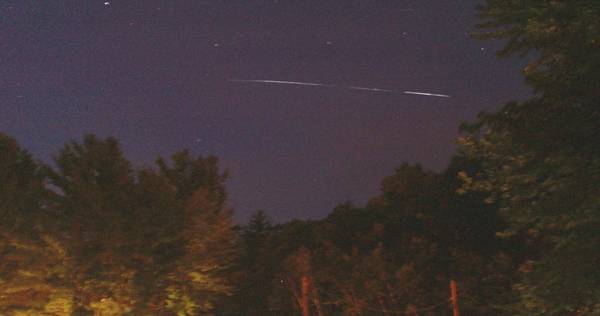So why was I so excited this morning? I finally saw the Hubble Space Telescope! For those of you further south, I know that's no big deal, but it's a real challenge from my home in NJ at 41 North latitude. It seldom gets higher than 12 degrees elevation, and it's in a bad direction for me as well, always due south near the treeline and haze. But this morning's pass was the highest I've ever seen listed, 14 degrees, and it passed just below the bright star Formanhaut.
It was actually easy to spot. Aaaaaagh

. Another one to check off my life list.
Two other satellites deserving comment.
UARS (Upper Atmospher Researh Satellite)
http://en.wikipedia.org/wiki/Upper_Atmo ... _Satellite
This was launched from the shuttle in 1991 (STS-48) with a lifetime of 3 years, but lasted until 2005 before being deactivated. From my observations over the last few days it appears to be tumbling slowly. The other night it was at least 1.5 magnitudes brighter than predicted, and had 2 soft (low rise and fall time) flares lasting a second or two of close to mag 0. This morning, it was dimmer than predicted and disappeared in the twilight. So watch it for surprises.
GRACE 1 and 2
"The GRACE mission was selected as the second mission under the NASA Earth System Science Pathfinder (ESSP) Program in May 1997. Launching in March of 2002, the GRACE mission will accurately map variations in the Earth's gravity field over its 5-year lifetime (Now extended through 2015-MW). The GRACE mission will have two identical spacecrafts flying about 220 kilometers apart in a polar orbit 500 kilometers above the Earth.
GRACE will be able to map the Earth's gravity fields by making accurate measurements of the distance between the two satellites, using GPS and a microwave ranging system. It will provide scientists from all over the world with an efficient and cost-effective way to map the Earth's gravity fields with unprecedented accuracy. The results from this mission will yield crucial information about the distribution and flow of mass within the Earth and it's surroundings."
These fairly bright, relatively low (hence fast) sats are about 30 seconds apart on nearly identical orbits. I loooked for them the morning, but only caught the trailing one (Grace-1) because they were nearly a minute early and about 5 degrees (half a fist width) off in position. This is despite the fact that the epoch of the orbit was less than 24 hours old. It's the price of being low and fast

So my advice is to go out a little early, and watch a little late to see these satellites. That's what I'll try the next time.
X-37B:
The orbit used by Heavens-Above is quite old, (June 8), and using that, I have no visible passes until the early morning hours of July 1. If anyone spots it, I'd be interested in hearing about it. In the meantime, I'll see if I can find an updated orbit somewhere else. 40 degree inclination to the orbit, so on a good pass it could be pretty high for the entire US.
Dragon/Falcon 9:
34.5 degree orbit, so the further south you are, the better your chances. I don't have a visible pass for another 5 days, and they will be a challenge in morning twilight.
Enough for now, I have to sleep :geek:





